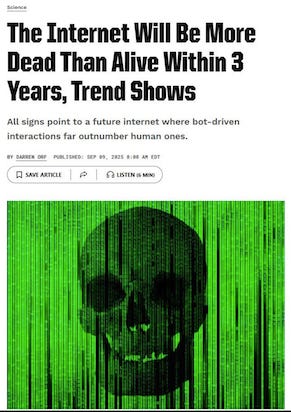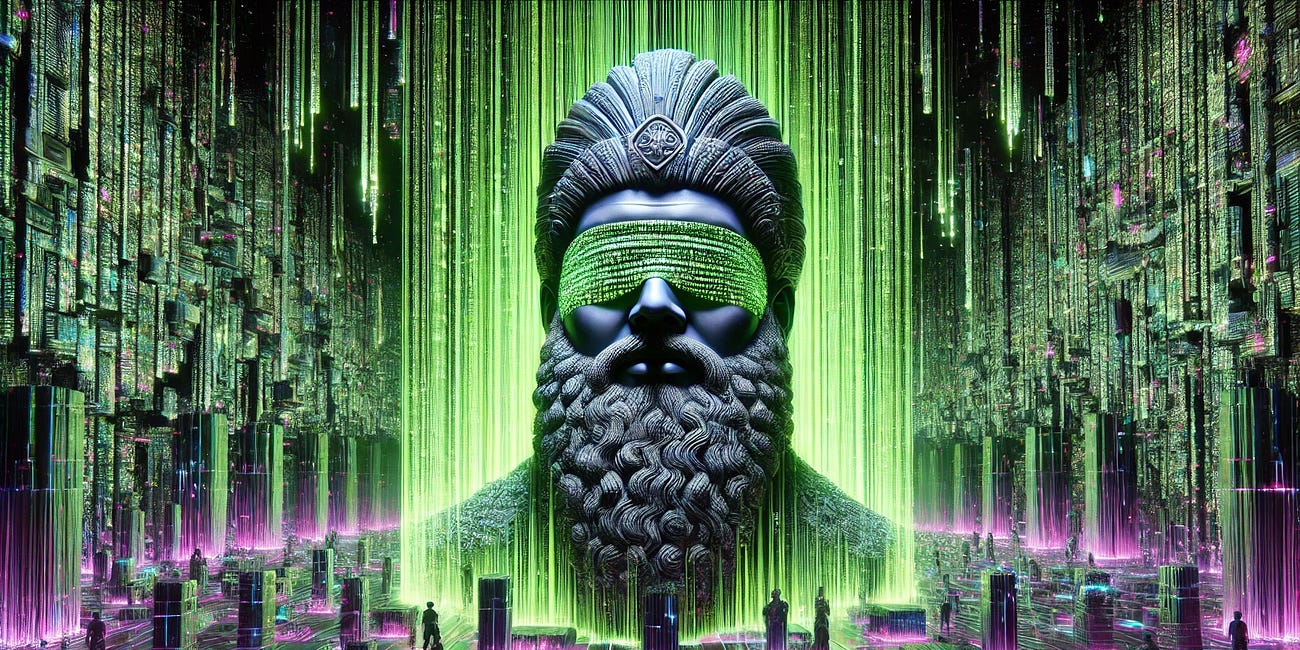Is Valuation Dead In the Age Of AI?
"Psychedelic Prices" and Collapsing Economic Coordination
If AI can etch a Shiba Inu dog into a price chart…what does that reveal about the ‘real’ prices powering our financial markets—and our entire economy?
The FT posed a timely question this week:
But we believe a more existential question is at stake for investors, economists, and society: do prices themselves—let alone stock market valuations—still hold genuine meaning when central banks, passive flows, algorithms, and AI dominate their formation?
Prices As Performance Art
Crypto pranks like the Shiba Inu price chart above raise deeply unsettling questions about the infrastructure underpinning our non-crypto markets. What do the prices of items that actually matter to our lives—such as the stocks and bonds flashing on our screens, or the prices we pay for goods on Amazon—actually mean when algorithms and AI systems increasingly determine their values within a monetary system dominated by activist central banks?
QE + ETFs + AI + Algos = HyperPrices
What appears to be a healthy market is in fact riddled with insidious “HyperPrices”—synthetic signals that mimic authentic market prices but carry none of the vital information that allows us to coordinate society and the economy. Our Hyperreality and Skynet series traced how these corrupted price signals emerge from the intersection of fiat money, algorithmic trading, passive flows, and artificial intelligence.
When central banks manipulate money and interest rates, quantitative easing (QE) policies flood markets with liquidity, passive exchange-traded funds (ETFs) buy indiscriminately, and algorithmic trading converges with AI and social media, prices increasingly resemble HyperPrices. Each layer of modern ‘market’ infrastructure strips away another connection between prices and reality.
Increasingly, prices no longer reflect what people truly value or how resources should flow—they function instead as synthetic artifacts of liquidity and computer logic.
Psychedelic Prices
The chaos is not limited to trading floors and the financial markets, however—it is increasingly infecting our pocketbooks and corporate boardrooms:
We are rapidly approaching the point where “$10 for a banana” stops being a punchline:
From Dead Internet Theory To Dead Price Theory
Photos, videos, articles, and social media posts increasingly blur the line between authentic and artificial content. Deezer, for example, recently revealed that 28% of music uploaded to its platform is already fully AI-generated. The trajectory of this trend—what some call the “dead internet”—is clear:
Just as AI-generated music floods streaming platforms and bot “slop” content overwhelms social media, artificial price signals are drowning out authentic market information. The resultant HyperPrices are economic pollution that mirrors what's occurring across the broader digital landscape. Financial markets and the economy are becoming equally contaminated by corrupted prices that blind us economically.
This corruption is even now metastasizing imperceptibly through the entire economy, undermining our collective ability to coordinate society, understand reality, plan for the future, and sustain progress—including for AI itself.
Most of the resulting chaos remains hidden beneath the surface, visible only in its most spectacular eruptions: flash crashes and meltups that evaporate or conjure trillions in seconds, meme stocks commanding billion-dollar valuations based on bot-amplified social media chatter, bubbles in “bankruptcy stocks,” and prank cryptocurrencies like cryptokitties and Fartcoin that somehow justify market capitalizations rivaling major corporations. But this vicious feedback loop, whereby decisions based on corrupted data generate even more synthetic signals—represents what we might call 'Dead Price Theory' as the economic parallel to dead internet theory.
HyperPrices & Ant Death Spirals
In short, our economy and financial markets are increasingly guided by artificial signals that have lost connection to reality. This mirrors the eerie "ant death spiral" we explored in our piece on Volmageddon, wherein army ants—separated from their colony—follow each other's pheromone trails in an endless circle until they perish from exhaustion.
When an individual loses the ability to distinguish reality from fabrication, we call it psychosis. But what happens when this detachment from reality occurs on a societal scale?
If we can no longer trust prices to guide society, the very foundation of our economy must be called into question. Read our essay The Price Of Everything & Value Of Nothing (link here) to understand how Skynet’s trading algorithms are digitally remastering history's greatest economic debate—and how decentralized HyperPrices risk the same blindness that doomed centrally planned economies like the USSR.
The Price Of Everything & Value Of Nothing
Originally published privately on January 13, 2021. Updated, revised and expanded for public release on December 29, 2024.









I hope I'll meet you in person one day, so I can shake your hand and say bravo for all your writings.. all else is unreal (or at least not real enough)
Map without a territory. Great piece - thank you.